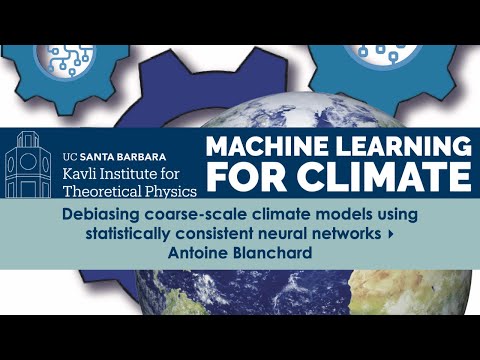Description:
Explore debiasing techniques for coarse-scale climate models using statistically consistent neural networks in this conference talk from the Machine Learning for Climate KITP conference. Dive into the challenges of informing society about future climate changes at regional and local scales, and discover how big data and machine learning algorithms can provide new opportunities for descriptive inference and causal questions in climate science. Learn about the framework for discrete representation of spatial scales, properties of spherical wavelets, and the cross-trained multi-model architecture used to address unresolved scales in climate modeling. Examine the strengths of the ML architecture, statistics of reconstructed fields, and the implementation of statistics and physics-based loss functions to improve climate model accuracy.

Debiasing Coarse-Scale Climate Models Using Statistically Consistent Neural Networks
Add to list
#Science
#Earth Science
#Climate Science
#Climate Modeling
#Mathematics
#Statistics & Probability
#Data Science
#Big Data
#Computer Science
#Machine Learning
#Environmental Science
#Climate Change
#Artificial Intelligence
#Neural Networks